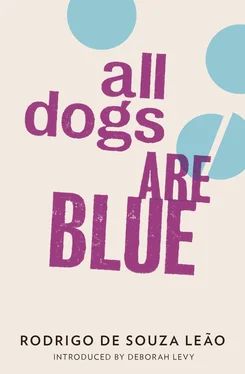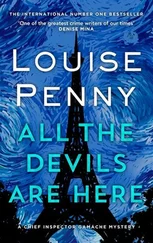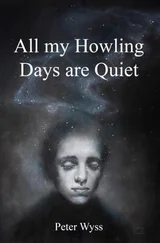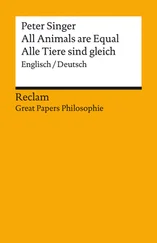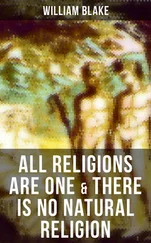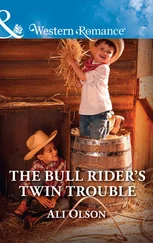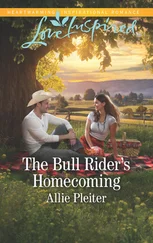Rodrigo Leao - All Dogs are Blue
Здесь есть возможность читать онлайн «Rodrigo Leao - All Dogs are Blue» весь текст электронной книги совершенно бесплатно (целиком полную версию без сокращений). В некоторых случаях можно слушать аудио, скачать через торрент в формате fb2 и присутствует краткое содержание. Год выпуска: 2013, Издательство: And Other Stories Publishing, Жанр: Современная проза, на английском языке. Описание произведения, (предисловие) а так же отзывы посетителей доступны на портале библиотеки ЛибКат.
- Название:All Dogs are Blue
- Автор:
- Издательство:And Other Stories Publishing
- Жанр:
- Год:2013
- ISBN:нет данных
- Рейтинг книги:4 / 5. Голосов: 1
-
Избранное:Добавить в избранное
- Отзывы:
-
Ваша оценка:
- 80
- 1
- 2
- 3
- 4
- 5
All Dogs are Blue: краткое содержание, описание и аннотация
Предлагаем к чтению аннотацию, описание, краткое содержание или предисловие (зависит от того, что написал сам автор книги «All Dogs are Blue»). Если вы не нашли необходимую информацию о книге — напишите в комментариях, мы постараемся отыскать её.
All Dogs are Blue Due to his mental fragility,
rarely left his house and yet, through social media, blogging, and e-mail, he became close to many Brazilian writers and poets and remains highly regarded today.
All Dogs are Blue — читать онлайн бесплатно полную книгу (весь текст) целиком
Ниже представлен текст книги, разбитый по страницам. Система сохранения места последней прочитанной страницы, позволяет с удобством читать онлайн бесплатно книгу «All Dogs are Blue», без необходимости каждый раз заново искать на чём Вы остановились. Поставьте закладку, и сможете в любой момент перейти на страницу, на которой закончили чтение.
Интервал:
Закладка:
Only on the day we launched All Dogs are Blue , at a signing in the playground of the building where Rodrigo lived with his family, did he and I finally meet in person. On that day it became clear that his work — which he had already begun to share on the internet — was getting recognition from several people in the literary world. Rodrigo himself purchased a sizeable share of books from that first imprint to send to various critics, writers and journalists, always trusting his own instincts.
A few months later came the announcement that the book had been nominated as one of fifty finalists for the Portugal Telecom Prize. On the night that the longlist was announced, his book was specifically cited (alongside the names of some of the most prominent names in Portuguese-language literature) as a sign of renewal and originality in Brazilian literature. The next day I rang Rodrigo — who by then was getting out of the house more, taking a painting course at an art school — to tell him the good news. During the course of the phone call he became very emotional, his voice cracked, and all he could say was ‘so much suffering’. He repeated the phrase and then couldn’t carry on, and I may also have choked up before we rang off.
News of Rodrigo’s death fell like a bombshell on 7Letras. It confirmed, somehow, the author’s own prediction (in a message that mixed his delirious lucidity with a dash of irony) that his books would only become successful after his death. In life, I think he was at least able to take in the positive reactions of those first readers and critics, who realised the strength and scope of his potent prose.
I wasn’t able to share with Rodrigo the joy of seeing the book’s first edition sell out (a rare success for a newcomer in Brazil, still a country of few readers), but I can imagine he would feel happy and fulfilled to see this new edition in circulation, coming to life with each new reader — just as I imagine each new reader will feel the same impact that I felt upon discovering this incredibly dense, rich and original work, which I continue to appreciate more fully with each new reading.
Jorge Viveiros de Castro, 2010
Publisher, 7Letras
Notes
1 It’s only Tupi in Anhembi . The Tupi indigenous peoples occupied much of the territory that is now Brazil when the Portuguese arrived in 1500. European diseases and slavery largely wiped out the indigenous population, but the mixed-race descendants of Portuguese settlers and indigenous women — known as mamelucos — kept the Tupi heritage alive and well. Indeed, until the Marquis of Pombal made Portuguese teaching mandatory in Brazilian schools in 1750, the Tupi language formed the basis for the country’s earlier lingua franca, Nheengatu, and its close southern relative, the Língua Geral Paulista.
Anhembi is a small town in the state of São Paulo. It so happens that its patron is Our Lady of Remedies. The word ‘Anhembi’ is of Tupi derivation.
The narrator is also alluding to Oswald de Andrade’s 1928 ‘Cannibal Manifesto’, one of the most important texts of Brazilian modernism, which includes the English phrase: ‘Tupi or not Tupi, that is the question.’ The manifesto argues that cannibalism has been misrepresented by sensationalist accounts: cannibals may ritually eat an enemy or an important ancestor, but in both cases it will be someone they revere. By eating the respected person the cannibals take the person’s strength into themselves. Andrade suggests the strength of Brazilian culture lies in its ability to ‘digest’ foreign influences without being dominated by them.
2 Paracambi . A town in the state of Rio de Janeiro and home to a number of psychiatric clinics. The town’s name is also of Tupi derivation, and means, roughly, ‘the green forest by the sea’.
3 the elastic, bovine drool that writer talks about. ‘That writer’ is the Brazilian journalist, playwright and author Nelson Rodrigues (1912–1980).
4 Casas da Banha. A Brazilian supermarket chain in the 1980s and 1990s; the name means, literally, Houses of Lard. The chain was based in Rio, where many people still remember it. It was one of the first to have hypermarkets in Brazil, including their flagship store Porcão (literally: the big pig).
5 Caju . A reference to São Francisco Xavier Cemetery, more commonly known in Rio as Caju Cemetery.
6 I’m leaving for Pasargadae. The English translation of ‘Vou-me embora pra Pasárgada’ — a well-known poem by Brazilian writer Manuel Bandeira (1886–1968). In it, the poet imagines escaping to the ancient Persian city of Pasargadae, which he reimagines as a utopian land: ‘Lá sou amigo do rei / Lá tenho a mulher que eu quero / Na cama que escolherei’ (There, I am the king’s friend / Have the woman I want / In the bed that I choose). Translation by ABM Cadaxa ( Oasis 1973).
7 Iansan. (Iansã in Portuguese.) A spirit entity, or Orisha, of the Afro-Brazilian religious faith Candomblé. She is invoked with the phrase Epahei, Iansan! , which is not Portuguese, but comes from the Yoruba.
8 I watched Esper on TV. Ronaldo Esper is a well-known Brazilian fashion and bridal designer who has appeared regularly on TV programmes since the late 1990s, and is famous for his scathing verdicts on Brazilian celebrities’ fashion sense.
9 ‘Boemia’ . A song by Teodoro and Sampaio, an extremely popular duo who sing sertanejo music — a genre of kitsch, romantic, acoustic guitar music that is rich in double entendres. The sertanejo is, literally, a person from the sertão , the outback in the North-east of Brazil.
10 National Kid and the Venusian Incas. National Kid (or Nacional Kid , as it was known in Brazil) was a Japanese TV series produced by Toei Company in 1960 and commissioned by Panasonic, then called National. The series never took off in Japan or the rest of the world, but was big in Brazil. Over the course of many series, our hero faced and defeated several enemies. The first of these were the Venusian Incas, who appeared in a flying saucer from outer space and threatened Japan with malevolent deeds.
11 Acugêlê banzai . A reference to the poem ‘Não sei dançar’ (I Can’t Dance) by Manuel Bandeira, in which he describes a cross-section of Brazilian society dancing to a jazz band at a Carnival party. One of the dancers is a Japanese man: ‘O japonês também dança maxixe / Acugêlê banzai!’ (The Japanese man dances maxixe too / Acugêlê banzai!). The poet has brought together ‘Acugêlê’, an African interjection not commonly used in Brazil, and ‘banzai’, a Japanese war cry. ‘Maxixe’ is a Brazilian dance that developed towards the end of the nineteenth century and was also known as the Brazilian tango.
12 One takes ether. The other, cocaine. A second allusion to Manuel Bandeira’s ‘Não sei dançar’. It starts: ‘Uns tomam éter, outros cocaína / Eu já tomei tristeza, hoje tomo alegria’ (Some take ether, others cocaine / I’ve already taken sadness, today I’m taking joy).
13 festa junina . National celebrations of popular saints that take place every June, coinciding with the winter solstice.
14 Roberto Carlos . Often called ‘The King’, Roberto Carlos is a famous Brazilian pop singer whose career has spanned over fifty years.
15 Trilce and Quaderna. Trilce, by the Peruvian poet César Vallejo (1892–1938), is a seminal work of modernist, avant-garde poetry. In one version of events, Vallejo decided to name the work Trilce after listening to his printer repeatedly mis-pronounce the Spanish word tres , meaning three. Quaderna , by one of the greatest Latin American poets, the Brazilian João Cabral de Melo Neto (1920–1999), is written entirely in four-line stanzas.
Читать дальшеИнтервал:
Закладка:
Похожие книги на «All Dogs are Blue»
Представляем Вашему вниманию похожие книги на «All Dogs are Blue» списком для выбора. Мы отобрали схожую по названию и смыслу литературу в надежде предоставить читателям больше вариантов отыскать новые, интересные, ещё непрочитанные произведения.
Обсуждение, отзывы о книге «All Dogs are Blue» и просто собственные мнения читателей. Оставьте ваши комментарии, напишите, что Вы думаете о произведении, его смысле или главных героях. Укажите что конкретно понравилось, а что нет, и почему Вы так считаете.
